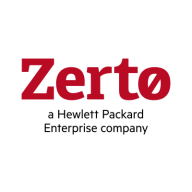


Zerto and AWS Snowball compete in data management solutions. Zerto appears to have the upper hand in disaster recovery and business continuity due to its real-time data protection, while AWS Snowball leads in scalable data migration for cloud transitions.
Features: Zerto focuses on disaster recovery, offering low RPOs, near-zero data loss, and integration with platforms like VMware and Hyper-V, making it suited for businesses demanding robust continuity capabilities. It enhances real-time continuous data protection. AWS Snowball excels in secure large data transfers to AWS cloud environments, employing physical devices for scalable data migration.
Room for Improvement: Zerto users seek enhanced reporting, more cloud compatibility, and better multi-tiered application integration. Improvements in automation for VM failovers and alert management are also desired. AWS Snowball's key improvement areas are enhanced security during device transit, expanded geographic availability, and more responsive customer support for account-related issues.
Ease of Deployment and Customer Service: Zerto predominantly serves on-premises and hybrid environments with straightforward deployment. Customer service is appreciated for responsiveness and expertise, even though occasional scaling challenges arise. AWS Snowball emphasizes public and hybrid cloud deployments, with physical setup being user-friendly for data transfers. Nonetheless, users wish for broader connectivity options and quicker deployments across more regions. Despite positive support reviews, Snowball's customer interaction processes could be enhanced to rival Zerto's satisfaction levels.
Pricing and ROI: Zerto presents a flexible licensing model but is generally more expensive. Its wide-ranging disaster recovery features justify its cost for businesses aiming for minimal downtime. AWS Snowball’s cost-effective data migration options are priced based on data volume and service level, offering appealing affordability for organizations handling large data transfers. Both solutions provide significant ROI within their specific use cases, with Zerto's expense balanced by its extensive capabilities and Snowball's affordability benefiting data-intensive cloud migrations.



IBM Turbonomic offers automation, planning, and right-sizing recommendations to streamline resource management, improve efficiencies, and optimize costs across virtualized environments and cloud platforms.
IBM Turbonomic is valued for its capability to optimize resource allocation and monitor virtual environments efficiently. It facilitates automated decision-making in VM sizing, load balancing, and cost optimization for both on-premises and cloud deployments. Users can leverage insights for workload placement, ensure peak performance assurance, and effectively right-size across VMware and Azure. The ongoing transition to HTML5 aims to improve visual and navigational ease, while expanded reporting features are anticipated. Opportunities for improved training, documentation, and integrations enhance platform usability and functionality.
What Are the Key Features?In finance, IBM Turbonomic aids in maintaining platform efficiency during market fluctuations. Healthcare organizations leverage its capability for resource optimization during high-demand periods to enhance patient care support. Retailers use it for planning in peak seasons, ensuring resources align with fluctuating demand to maintain performance continuity.
Snowball is a petabyte-scale data transport solution that uses devices designed to be secure to transfer large amounts of data into and out of the AWS Cloud. Using Snowball addresses common challenges with large-scale data transfers including high network costs, long transfer times, and security concerns. Customers today use Snowball to migrate analytics data, genomics data, video libraries, image repositories, backups, and to archive part of data center shutdowns, tape replacement or application migration projects. Transferring data with Snowball is simple, fast, more secure, and can be as little as one-fifth the cost of transferring data via high-speed Internet.
Zerto is used for disaster recovery, business continuity, data migration, and ransomware recovery, providing continuous data protection and near real-time replication. Valued for ease of use, efficient failover processes, and versatile integration, it enhances organizational efficiency, reduces errors, and boosts productivity.
We monitor all Cloud Migration reviews to prevent fraudulent reviews and keep review quality high. We do not post reviews by company employees or direct competitors. We validate each review for authenticity via cross-reference with LinkedIn, and personal follow-up with the reviewer when necessary.